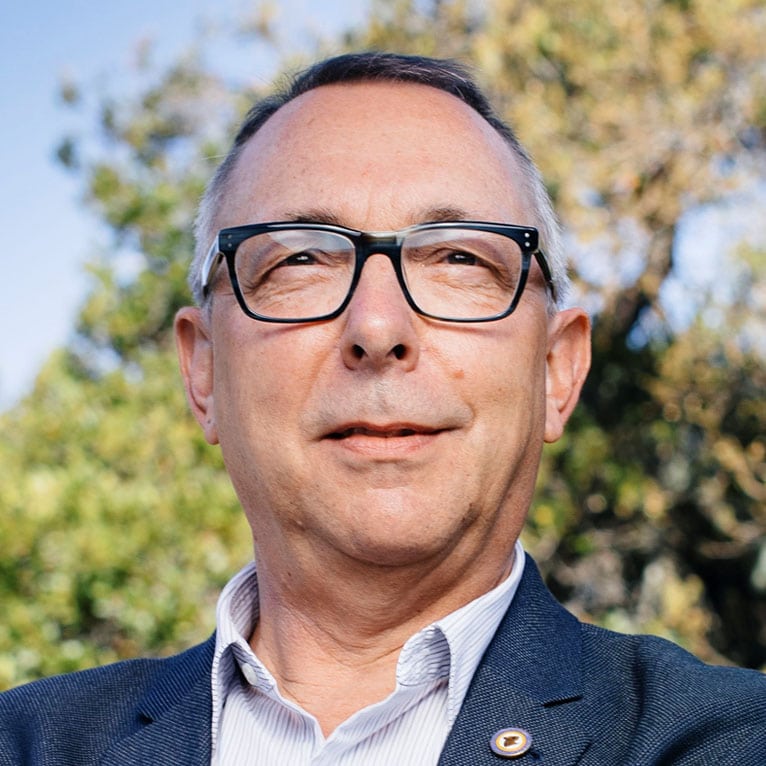Catalyst for a Cure: A Synergistic Approach to Scientific Research

Dr. John G. Flanagan discusses recent discoveries that could cure glaucoma based on key research accomplishments from 20 years of Catalyst for a Cure.
Catalyst for a Cure, Glaucoma Research Foundation’s flagship research program, takes a bold, collaborative approach to discovery by breaking down traditional research silos and bringing great minds together toward a future free from glaucoma.
Since 2002, GRF has introduced four Catalyst projects, each focused on a different aspect of glaucoma. For every initiative, scientific advisors select four top researchers from four leading institutions to form a consortium dedicated to eradicating glaucoma. Investigators start by partnering for three years. Based on progress, the GRF board may vote to extend a consortium’s funding for additional years.
The Catalyst discovery model is unique in the world of research, says John G. Flanagan, PhD, FCOoptom, Dean of the School of Optometry at UC Berkeley and Chair of the GRF Research Committee. “Usually, scientists work individually, often competing for grant money,” Flanagan adds. In contrast, Catalyst investigators, working out of their own labs, pursue promising leads together. “They design their research in partnership, report results as a team, and generate insights much more quickly than they could working alone,” he says.
The latest Catalyst consortium, the Neurodegenerative Initiative, breaks new ground in more ways than one. “First, top researchers rarely cross from one disease to another,” says Flanagan. “This initiative expands on the Catalyst model to identify commonalities among multiple, related diseases.” Second, the launch of the Neurodegeneration Initiative puts two Catalyst endeavors in motion at the same time.
The two consortia are complementary rather than competitive, Flanagan points out. “Both teams have the same overall goal of preventing vision loss from glaucoma;” he explains. The Vision Restoration Initiative is concerned with restoring vision cells lost through neurodegeneration. Meanwhile, the Neurodegeneration Initiative will look at how neuronal death can be prevented, stopped, or reversed.
Dr. Flanagan believes the result will be a uniquely synergistic approach to discovery. “Adding a second, simultaneous Catalyst for a Cure brings four more labs with different capabilities to work on curing glaucoma,” he says. It also adds a second group of scientific advisors with different backgrounds to strengthen the effort. “We encourage collaboration between the two Catalyst teams and their advisors,” says Flanagan. “Our hope, with this latest initiative, is that we will gain new insights from comparing the mechanisms of neurodegeneration in two different diseases, delivering both therapeutic and diagnostic advantages.”
Posted on August 19, 2022

John G. Flanagan, PhD, FCOoptom
John G. Flanagan is the Dean and Professor at School of Optometry and Vision Science Program, University of California, Berkeley. In 2022 he began serving as Chair of the Research Committee for Glaucoma Research Foundation.